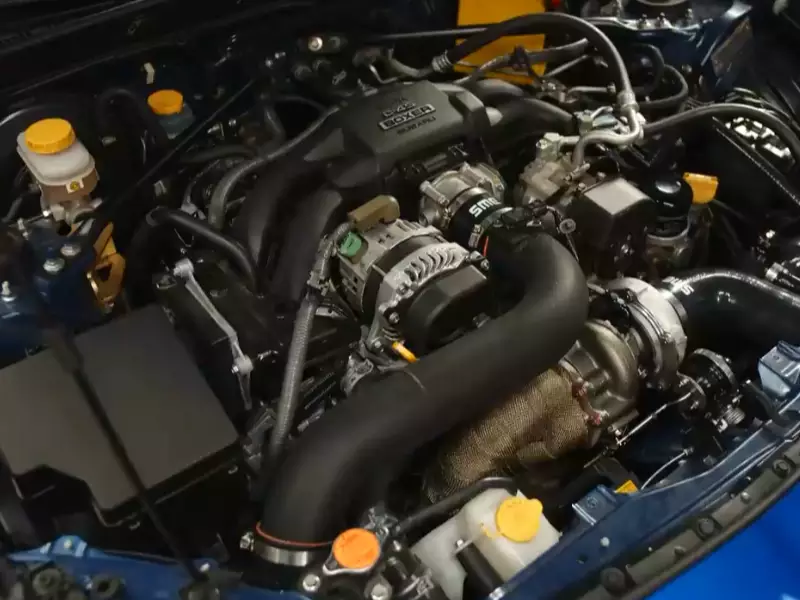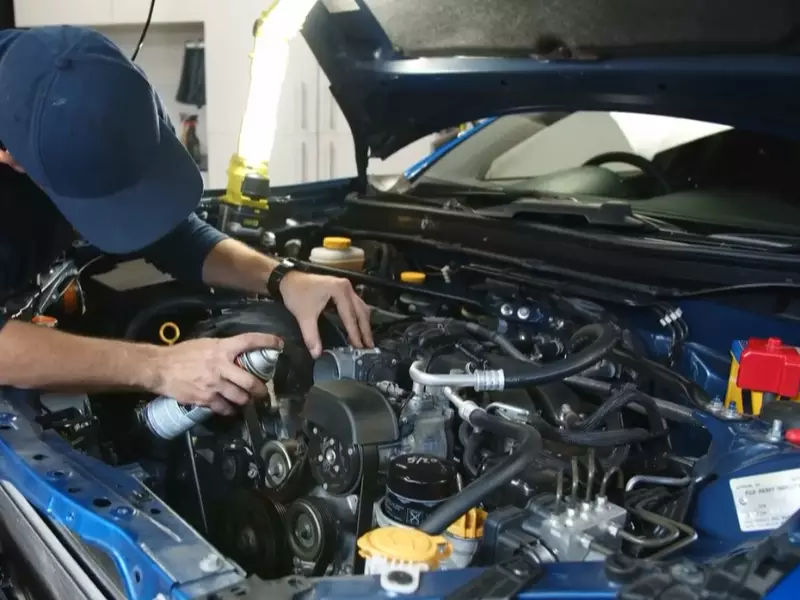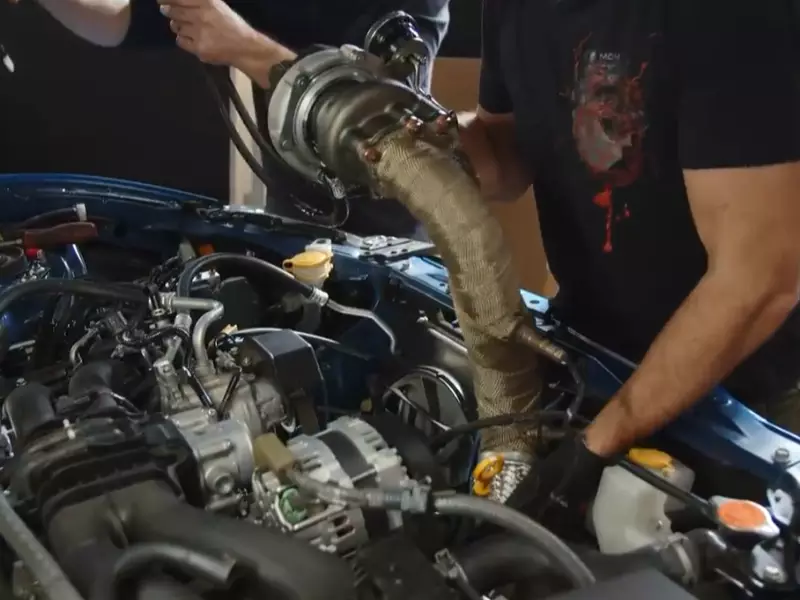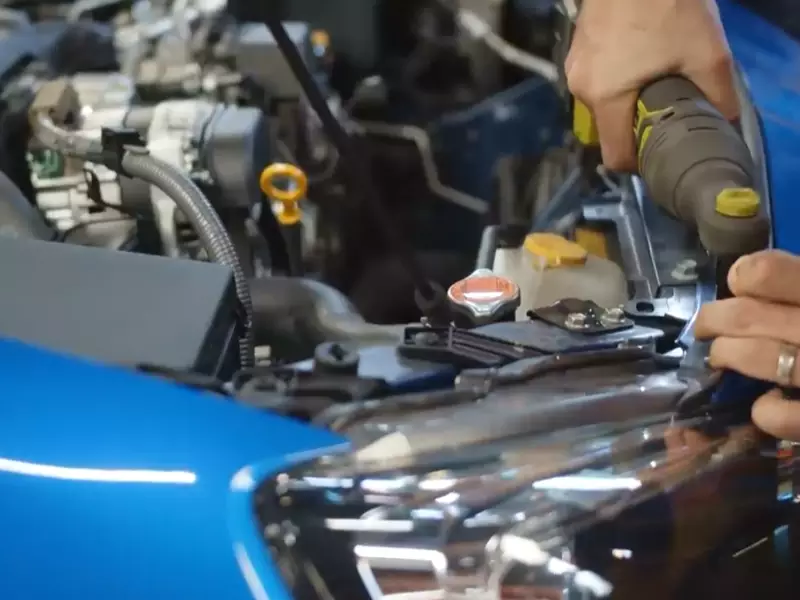Installing a turbo kit involves several steps, including mounting the turbocharger, connecting the exhaust and intake systems, and installing an intercooler.
Understanding Turbo Kits And Their Benefits
A turbo kit is a performance upgrade that can significantly increase the horsepower and torque of your vehicle. It works by forcing more air into the engine, allowing it to burn more fuel and produce more power. In this article, we will dive into what a turbo kit is, how it works, and the benefits of installing one in your vehicle.

What is a Turbo Kit and how does it work?
A turbo kit consists of various components designed to increase the engine’s output. The most crucial part of the kit is the turbocharger itself, which is a turbine-driven forced induction device. It works by utilizing the energy from the exhaust gases to compress the incoming air and deliver it to the engine.
The process starts with the exhaust gases flowing out of the engine and into the turbocharger’s turbine housing. As the exhaust gases pass through the turbine, they spin the turbine wheel. The spinning motion then drives the compressor wheel, which is connected to the turbine wheel by a common shaft.
The compressor wheel draws in ambient air through an air filter and compresses it before sending it into the engine’s intake manifold. The compressed air is denser and contains more oxygen molecules than the atmospheric air, allowing the engine to burn more fuel and generate more power.
Benefits of installing a Turbo Kit in your vehicle
Installing a turbo kit in your vehicle offers several benefits that enhance both performance and efficiency:
- Increased horsepower and torque: The most obvious benefit of a turbo kit is the significant increase in horsepower and torque. This allows your vehicle to accelerate faster, making it more enjoyable to drive.
- Better fuel economy: Despite the increased power output, a turbocharged engine can provide better fuel economy compared to a naturally aspirated engine of the same size. The turbocharger allows the engine to burn fuel more efficiently, reducing the overall fuel consumption.
- Improved altitude performance: Turbochargers are particularly helpful at higher altitudes where the air density is lower. By compressing the thin air, a turbocharged engine can maintain its power output even at high elevations.
- Enhanced towing capability: If you regularly tow heavy loads, a turbo kit can greatly enhance your vehicle’s towing capacity. The increased torque provided by the turbocharger allows the engine to handle heavier loads with ease.
Overall, installing a turbo kit in your vehicle can transform it into a more powerful and efficient machine. It improves horsepower, torque, fuel economy, and altitude performance, making your driving experience thrilling and enjoyable.
Preparing For Installation
Before diving into the exciting process of installing a turbo kit, it is crucial to prepare adequately. This involves conducting thorough research, gathering all the necessary tools and materials, and prioritizing safety precautions. By taking these steps, you will not only optimize your installation experience but also ensure a successful outcome. So, let’s delve into the details of how to effectively prepare for installing a turbo kit.
Research and gather the necessary tools and materials
Embarking on any installation project requires gathering the right tools and materials to ensure a smooth and efficient process. Installing a turbo kit is no exception. This stage calls for diligent research and understanding of the specific components needed for your particular vehicle make and model.
Start by consulting the manufacturer’s instructions to determine the tools and materials required. Additionally, it is wise to complement this information with online resources, forums, and expert advice. By doing so, you can find valuable insights from experienced enthusiasts who have previously installed turbo kits on similar vehicles.
Once you have gathered the necessary knowledge, it’s time to compile a comprehensive list of tools and materials. Create a checklist to ensure nothing is overlooked when you embark on the installation process. Here are some essential items you may require:
| Tools | Materials |
|---|---|
| Socket and wrench set | Turbocharger |
| Torque wrench | Intercooler |
| Engine hoist or lifting mechanism | Exhaust manifold |
| Fuel injectors | Piping and hoses |
| ECU tuning software | Oil and coolant |
Safety precautions to consider before starting the installation process
Prioritizing safety is paramount when working on any automotive installation, especially when it involves crucial components like a turbo kit. Before delving into the installation process, keep the following safety precautions in mind:
- Work in a well-ventilated area: Ensure your workspace is properly ventilated, as working with chemicals and exhaust components can release harmful fumes.
- Wear protective gear: Always wear appropriate safety gear, including gloves, safety glasses, and proper clothing to protect yourself from potential hazards or accidents.
- Disconnect the battery: Before working on any electrical connections or components, disconnect the battery to prevent electrical shocks or short circuits.
- Use proper lifting equipment: When dealing with heavy components or the engine, utilize a reliable engine hoist or lifting mechanism to avoid straining yourself or causing damage.
- Refer to the vehicle’s manual: Familiarize yourself with your vehicle’s manual and follow any specific safety instructions or precautions mentioned by the manufacturer.
By adhering to these safety measures, you can significantly reduce the risk of accidents or injuries during the installation process, ensuring a safe and successful outcome.

Step-By-Step Installation Process
Installing a turbo kit can significantly enhance the performance of your vehicle. However, it is important to follow a step-by-step installation process to ensure the Turbo Kit is installed correctly and functions optimally. In this guide, we will walk you through the installation process, from removing existing components to connecting hoses and fittings, to mounting and securing the Turbo Kit components.
Removing the existing components to make way for the Turbo Kit
The first step in installing a Turbo Kit is to remove the existing components that may interfere with the installation. This typically includes the air intake system, exhaust manifold, and any other components that are in the way of the turbocharger, intercooler, and wastegate.
Installing the Turbo Kit components, including the turbocharger, intercooler, and wastegate
Once the existing components are removed, it’s time to install the Turbo Kit components. Start by mounting the turbocharger onto the exhaust manifold using the appropriate mounting hardware. Ensure that the turbocharger is securely fastened to prevent any leaks or vibrations. Next, install the intercooler, which helps cool the compressed air from the turbocharger before it enters the engine. Position the intercooler in a suitable location and connect it to the intake and exhaust systems using the provided hoses and clamps. Finally, install the wastegate, which regulates the boost pressure generated by the turbocharger. Make sure to position the wastegate correctly and securely tighten any connections.
Connecting the various hoses, pipes, and fittings
With the major components in place, it’s time to connect the various hoses, pipes, and fittings that make up the Turbo Kit. Start by connecting the intake pipe from the turbocharger to the air filter housing. Use the provided silicone couplers and clamps to ensure a secure connection. Next, connect the intercooler piping to the intake and exhaust systems, ensuring that all connections are tight and leak-free. Finally, connect any additional fittings, such as oil lines or vacuum hoses, following the manufacturer’s instructions.
Mounting and securing the Turbo Kit components
The final step in the installation process is to mount and secure the Turbo Kit components to ensure they stay in place during operation. Start by checking all the connections and make any necessary adjustments or tighten any loose fittings. Use the provided brackets or mounting hardware to secure the components to the chassis or engine bay. Double-check all the mounting points to ensure they are secure and won’t interfere with other components.
Follow these step-by-step instructions to install a Turbo Kit and enjoy the increased power and performance of your vehicle. Remember to refer to the manufacturer’s instructions for specific details and any additional steps or precautions. With proper installation, your Turbo Kit will provide long-lasting performance and an exhilarating driving experience.
Tuning And Testing
After successfully installing a turbo kit in your vehicle, the next step is tuning and testing to unleash the true power potential. Tuning allows you to optimize the performance of your vehicle, ensuring it runs smoothly and efficiently. Testing is crucial to check the turbo kit’s functionality and ensure everything is working as intended. In this section, we will delve into the importance of tuning after turbo kit installation, various methods for tuning and optimizing performance, and the importance of testing for proper functionality and efficiency.
Understanding the Importance of Tuning After Turbo Kit Installation
Once a turbo kit is installed in your vehicle, it is essential to understand the importance of tuning to maximize performance and prevent any potential issues. Tuning involves fine-tuning the engine’s parameters to match the increased airflow and pressure generated by the turbocharger. Proper tuning helps avoid issues such as excessive fuel consumption, engine knocking, or even engine damage.
Methods for Tuning and Optimizing Performance
There are several methods available to tune and optimize performance after installing a turbo kit. Here are some popular approaches:
- ECU Remapping: Modifying the engine control unit (ECU) software is a popular method for tuning. By modifying the fuel injection timing, air-to-fuel ratio, and boost levels, the ECU can be calibrated to provide optimal performance.
- Installation of Performance Modules: Performance modules such as piggyback or standalone engine management systems offer a more flexible and customizable approach to tuning. These modules allow precise control over fuel delivery, ignition timing, and boost pressure for enhanced performance.
- Using a Dyno: A dynamometer, or dyno, is a powerful tool used to measure and analyze a vehicle’s performance. By conducting dyno tests, you can fine-tune the engine parameters to achieve the best performance output. It provides real-time data on horsepower, torque, and other vital performance metrics.
- Air/Fuel Ratio Adjustment: Balancing the air/fuel ratio is crucial for optimum performance. Monitoring and adjusting the air/fuel mixture ensures efficient combustion, maximizing power output while preventing engine damage.

Testing the Turbo Kit to Ensure Proper Functionality and Efficiency
Testing the turbo kit after installation is crucial to ensure it functions properly and your vehicle operates efficiently. Here are some important tests to consider:
- Boost Pressure Test: Testing the boost pressure ensures the turbocharger is delivering the desired amount of pressure. Any deviation from the specified boost level may indicate a boost leak or other issues.
- Fitment and Leak Test: Carefully inspecting the kit’s components for proper fitment and performing a leak test is essential. This involves checking for any leaks in the intake, exhaust, or intercooler piping, as leaks can hinder performance.
- Performance Evaluation: Taking your newly turbocharged vehicle for a test drive under varied conditions is necessary to evaluate its performance. Monitor factors such as acceleration, throttle response, and overall power delivery to ensure everything is operating smoothly.
- Temperature and Oil Pressure Monitoring: Keeping an eye on engine temperatures and oil pressure is vital during the testing phase. Elevated temperatures or low oil pressure may indicate an issue with the turbo kit or engine, requiring further investigation.
By following these tuning and testing methods, you can ensure that your turbo kit is perfectly optimized for performance, providing an exhilarating driving experience while ensuring the longevity of your engine.
Troubleshooting Common Issues
When installing a turbo kit, it’s important to be prepared for potential issues that may arise during the process. Troubleshooting these common issues can help ensure a smooth installation and maximize the performance of your turbo system. In this section, we will discuss how to identify and resolve potential problems during the installation process, as well as common issues to watch out for and their solutions.
Identifying and resolving potential problems during installation
While installing a turbo kit, it’s crucial to be aware of potential problems that may occur. By identifying these issues early on, you can save yourself time and frustration. Here are some common problems that may arise during the installation process:
- Leaking oil or coolant: One of the most common issues is oil or coolant leaks. These leaks can be caused by loose connections or damaged gaskets. To resolve this issue, thoroughly inspect all connections and ensure they are tight. Be sure to replace any damaged gaskets.
- Boost leaks: Another common issue is boost leaks, which can result in poor performance and reduced power. To identify boost leaks, carefully inspect all intercooler piping for cracks or loose connections. It’s also a good idea to perform a boost leak test.
- Incorrect installation of components: Sometimes, components may be incorrectly installed, leading to poor performance or even damage to the turbo system. Double-check that all components are installed according to the manufacturer’s instructions. Pay close attention to the orientation and torque specifications of the components.
- Exhaust leaks: Exhaust leaks can cause power loss and may even lead to damage to your turbocharger. Inspect the exhaust system for leaks and ensure all connections are secure. Replace any damaged gaskets or seals.
Common issues to watch out for and their solutions
During the installation of a turbo kit, certain common issues tend to arise. By being aware of these issues and their solutions, you can effectively troubleshoot and overcome them. Here are some common issues to watch out for:
| Issue | Solution |
|---|---|
| Boost spikes or surges | Check for any loose or damaged vacuum lines and ensure the wastegate is functioning correctly. Adjust the boost controller, if necessary, to maintain stable boost levels. |
| Overheating | Inspect the cooling system for any obstructions or leaks. Ensure the radiator is functioning properly and the coolant levels are adequate. Consider upgrading the radiator or adding an intercooler to improve cooling efficiency. |
| Excessive smoke | Excessive smoke can indicate an oil leak or a problem with the turbocharger. Check for any oil leaks and inspect the turbocharger for damage. Replace any faulty seals or gaskets. |
| Lack of power | A lack of power can be caused by various factors such as boost leaks, fuel delivery issues, or incorrect tuning. Check for boost leaks, ensure the fuel system is functioning correctly, and consider consulting a professional tuner to optimize your engine performance. |
By being aware of these common issues and their solutions, you can troubleshoot and resolve any problems that may arise during the installation of your turbo kit. Remember, proper installation and regular maintenance are key to ensuring optimal performance and longevity of your turbo system.
Maintenance And Care
When it comes to getting the most out of your turbo kit, regular maintenance and care are crucial. By following a few simple routines, you can keep your turbo kit in optimal condition and ensure that it performs at its best for years to come.
Regular maintenance routines to keep your Turbo Kit in optimal condition
To maintain your turbo kit’s optimal performance, you need to establish regular maintenance routines. These routines will help you identify any potential issues early on and prevent major problems down the line. Here are some maintenance tasks you should perform regularly:
- Check the oil levels: Make sure to regularly check the oil levels in your turbo kit. Adequate lubrication is crucial for the turbocharger’s proper function. If the oil levels are low, top them up as recommended by the manufacturer.
- Inspect for leaks: Check for any oil or coolant leaks around the turbocharger. Leaks can lead to poor turbo performance and potential damage to other engine components. If you find any leaks, address them promptly.
- Clean or replace air filters: Dirty or clogged air filters can restrict airflow to the turbocharger, affecting its efficiency. Regularly clean or replace the air filters based on the manufacturer’s recommendations.
- Monitor boost pressure: Keep an eye on the boost pressure gauge to ensure it is within the recommended range. Any sudden changes or deviations may be indicative of a problem that needs attention.

Cleaning and inspecting the components for wear and tear
In addition to regular maintenance routines, it is essential to clean and inspect the turbo kit components periodically. This ensures that they are free from any dirt, debris, or wear and tear. Here’s how you can clean and inspect your turbo kit:
- Remove the components: Begin by disconnecting the turbo kit components from the engine. This will allow you to access and clean each part more effectively.
- Clean with compressed air or solvent: Use compressed air or an appropriate solvent to clean the components. Pay special attention to the turbocharger itself, intercooler, and piping. Ensure that all dirt and debris are removed thoroughly.
- Inspect for wear and tear: While cleaning, inspect the components for any signs of wear and tear. Check for cracks, loose connections, or worn-out seals. Address any issues promptly to prevent further damage.
- Reassemble and reinstall: Once the cleaning and inspection are complete, reassemble the components and reinstall them onto the engine. Make sure all connections are tight and secure to avoid any leaks.
Replacing worn-out parts and addressing any performance issues
If you notice any performance issues with your turbo kit, it is crucial to address them promptly. Ignoring performance problems can lead to further damage and costly repairs. Here’s what you can do:
- Identify the problem: Diagnose the issue by paying attention to any strange noises, decreased power, or increased smoke. Use diagnostic tools if necessary to further pinpoint the problem.
- Replace worn-out parts: If any components are worn-out or damaged, replace them with genuine manufacturer parts. This will ensure optimal performance and longevity of your turbo kit.
- Adjust parameters if needed: If the performance issues persist even after replacing worn-out parts, consider adjusting parameters such as boost pressure or fuel mixture. Consult with a professional if you are unsure about making these adjustments.
- Listen to your engine: After performing any maintenance or replacing parts, listen to your engine to ensure it is running smoothly. If you notice any unusual sounds or irregularities, investigate and address them accordingly.
Maintaining and caring for your turbo kit doesn’t have to be complicated. By following these maintenance routines, cleaning and inspecting the components, and addressing any performance issues promptly, you can ensure the optimal functioning of your turbo kit and enjoy its benefits for years to come.
Expert Tips And Best Practices
Installing a turbo kit can significantly enhance the performance of your vehicle, adding that extra power and torque you crave. However, it’s crucial to approach the installation process with care and follow expert tips and best practices to ensure everything goes smoothly. In this section, we’ll share proven tips and tricks for a successful turbo kit installation, as well as best practices to enhance performance and longevity. Let’s dive in!
Proven Tips and Tricks for a Successful Turbo Kit Installation
When it comes to installing a turbo kit, attention to detail and precision are key. Follow these proven tips and tricks to ensure a smooth installation process:
- Prepare the workspace: Before you begin, make sure you have a clean and organized workspace. Remove any clutter and ensure there is enough room to work comfortably.
- Read the instructions: Take the time to carefully read through the instructions provided with your turbo kit. Familiarize yourself with the components, tools required, and the steps involved in the installation process.
- Ensure all necessary parts are included: Before diving in, double-check that all necessary parts are included in the kit. This includes gaskets, bolts, brackets, and hoses. If anything is missing, contact the manufacturer promptly.
- Inspect and clean components: Before installation, inspect all components for any signs of damage or wear. Clean any dirt or debris that may have accumulated, ensuring everything is in perfect condition before proceeding.
- Utilize quality tools: Investing in quality tools will make the installation process much easier and reduce the risk of damaging components. Ensure you have a torque wrench, socket set, and other necessary tools readily available.
- Take your time: Installing a turbo kit requires patience and attention to detail. Rushing through the process can lead to mistakes and potential issues down the line. Take your time to ensure each step is done correctly.
- Test for leaks: Once the installation is complete, it’s crucial to test for any potential leaks. This includes checking for oil, coolant, or boost leaks. Address any issues immediately to prevent further damage.
Best Practices to Enhance Performance and Longevity of Your Turbo Kit
Proper maintenance and care are essential to maximize the performance and longevity of your turbo kit. Follow these best practices to ensure optimal results:
- Choose the right oil: Using the correct oil and changing it regularly is crucial for turbocharger longevity. Opt for a high-quality synthetic oil that meets the manufacturer’s specifications.
- Warm-up and cool down: Allow your vehicle to idle for a minute or two before shutting off the engine to let the turbocharger cool down. Similarly, avoid aggressive driving before the turbocharger has reached its optimal operating temperature.
- Regularly check and clean air filters: Clean and inspect your air filters regularly to prevent any debris from entering the turbocharger. Replace filters when they become dirty or damaged.
- Monitor boost levels: Keeping an eye on your boost levels is essential to prevent over boosting, which can put excessive stress on the turbocharger. Invest in a boost gauge to accurately monitor and adjust boost levels.
- Maintain proper lubrication: Ensure the oil lines and fittings are properly lubricated to prevent any issues with oil flow. Regularly check for leaks and address them promptly.
By following these expert tips and best practices, you’ll not only have a successful turbo kit installation but also enhance the performance and longevity of your turbocharged vehicle. Enjoy the power and excitement that comes with a properly installed and maintained turbo kit!
Frequently Asked Questions For How To Install A Turbo Kit
Can You Install A Turbo Kit Yourself?
Yes, it is possible to install a turbo kit yourself. However, it requires proper knowledge, experience, and tools. It is recommended to consult a professional for accurate installation and to avoid any potential damage or safety issues.
Can You Put A Turbo Kit On Any Car?
Yes, a turbo kit can be installed on almost any car to increase its power and performance.
Can I Just Install A Turbo?
No, you can’t just install a turbo. Installing a turbo requires careful consideration of various factors, such as engine specifications and compatibility. It’s recommended to consult with a professional to ensure proper installation and optimization for your vehicle’s performance.
How Much HP Does A Turbo Kit Add?
A turbo kit can add significant horsepower to a car, ranging from 50 to 100+ HP.
Conclusion
To sum up, installing a turbo kit might seem daunting at first, but with the right approach and guidance, it can be a rewarding experience. By following the step-by-step instructions, ensuring you have all the necessary tools and components, and taking the time to properly tune and test your new turbo kit, you can increase the power and performance of your vehicle.
Keep in mind that patience and attention to detail are key throughout the process to ensure a successful installation. So, don’t hesitate to embark on this exciting journey and unleash the full potential of your car.
